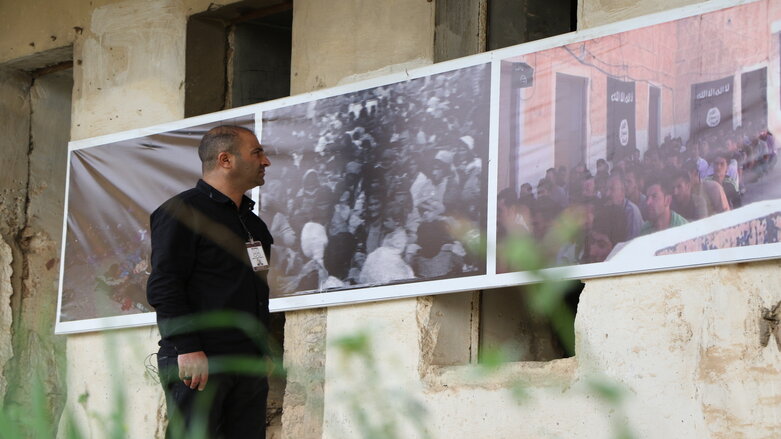Nizarki Fort, a symbol of the Bahdinan Anfal genocide

DUHOK (Kurdistan 24) - The Nizarki Fort in Duhok city is a symbol of the Bahdina Anfal genocide since it was where the former Baath regime systematically tortured and killed thousands of people.
Nizarki Fort is known as the site of a detention center used during the brutal Anfal campaign in the late 1980s. The facility is closed now, and new houses have been built nearby.
The fort still haunts survivors of Bahdinan Anfal. Even passing by the place is a painful experience for them.

Khaleel Othman was only nine years old when he lost his father in the fort in 1988, who was killed along with 43 others from his village.
Othman is now the manager of the Eighty Eight organization he founded in 2014 to keep the memory of victims alive by making new generations aware of this tragic past.
Anfal consisted of eight stages, the last of which was in the Bahdinan region.
The Badinan Anfal started on Aug. 25, 1988, and continued until Sept. 6 that year. It is considered the fiercest stage of the murderous campaign.
In the span of two hours, 36 villages in Duhok province were bombed with chemical weapons and conventional bombs. Then the Iraqis launched a ground operation from six fronts. More than 670 villages were destroyed, forcing people to flee to Turkey and Iran.
Over 3,000 people went missing and lost their lives during the Anfal campaign in Bahdinan. According to Khaleel, the remains of only 13 victims have been recovered so far.
Those 13 victims were officially buried in September 2018 in a field near the Nizarki Fort. Their bodies were previously buried in a mass grave in 1988.
Khaleel wants to see the completion of a project to turn the Nizarki Fort site into a permanent place of remembrance and a museum.
Ameer Ali, director general of culture and art in Duhok, told Kurdistan 24 that they have been making serious efforts to turn Nizarki Fort into a museum.
From 1991-2009 some families were living in the fort. In 2009 it was evacuated. Since 2010 it has been decided to turn Nizark Fort into a museum. The directorate of culture and art in Duhok supervised the project.
The first way was to arrange the technical and artistic aspects in a way that doesn’t change the fort’s old shape but tidies the site up. The project faced obstacles and was halted in 2014 due to the fight against ISIS and the debilitating concurrent financial crisis.
“We intend to set up a panorama through which we can depict the tragic events and atrocities that took place during Anfal, particularly in the Nizarke Fort,” said Ameer.
The monument of Bahdinan Anfal will be built at the fort. It will illustrate the cruelty of the Saddam regime and how his army murdered detainees inside the fort with concrete bricks.

In April 2022, the director general of culture and art in Duhok met with Kurdistan Region Prime Minister Masrour Barzani. The director raised their request for resuming work on the museum.
Nizarke Fort was built as a military facility in the 1980s on a 15,000 square meter site. It has more than 80 rooms.
The Baath regime used it to round up locals and torture them there before trucking and bussing to the killing fields.
On Sept. 10, 2021, during his first visit to Duhok province as prime minister of Iraq, Mustafa Al-Kadhimi stopped at Nizarki Fort and met relatives of some Anfal victims and listened to their demands.
However, according to the founder of Eighty Eight organization, Kadhimi hasn’t met any of these demands almost a year after hearing them.
Article 132 of the Iraqi constitution stresses that the Iraqi government must compensate Anfal victims and their families. However, that has not been adhered to and remains, for all intents and purposes, only ink on paper.
